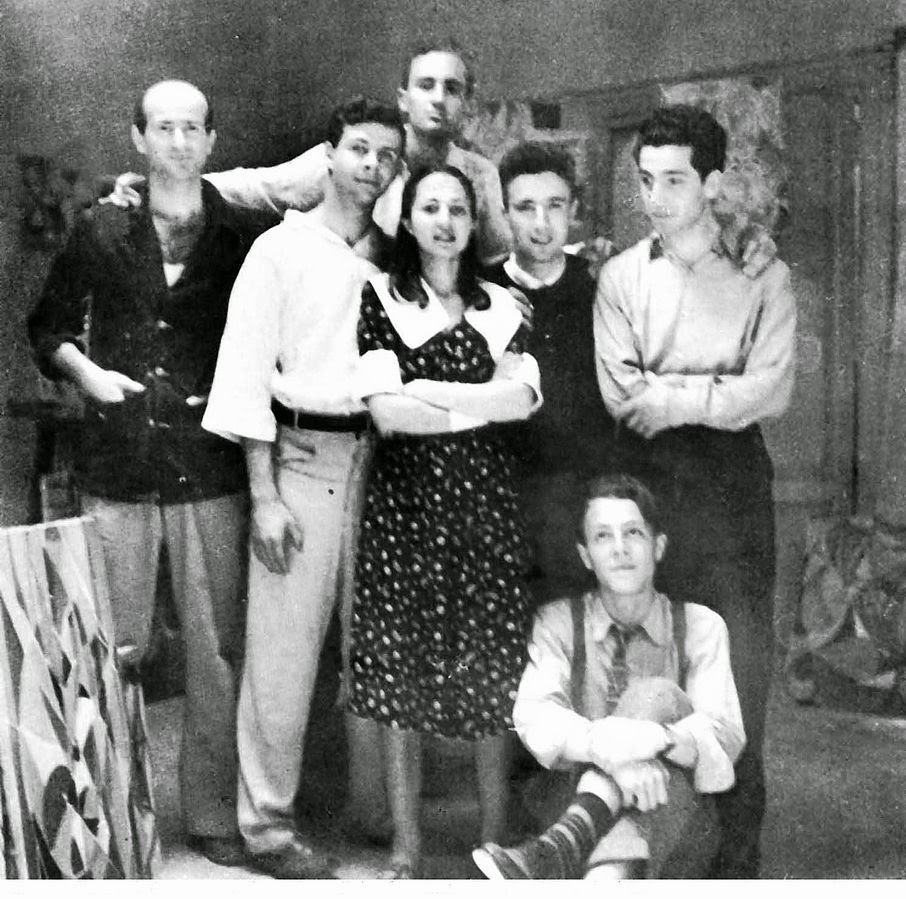Saturday, October 11, 2014
Carla Accardi Day
I am going through the whole list systematically because, otherwise, I may just talk about a few of the artists if I allowed myself to just choose the artists I think I like most. Today is Carla Accardi day. She was born in Italy during war time. Here, I think is a good overview of her - short and sweet which, after researching the history of Mussolini and Marxism in Italy and not really wishing to get into it...I am leaning toward liking best:
Carla Accardi rose to fame as founding member of the 1947 Italian avant-garde movement Forma 1, a group of artists based in Rome who, in the face of Fascism, embraced the principals of Futurism and Marxism. As one of the key figures of abstract art in Italy during the time, Accardi developed an iconic visual lexicon of calligraphic marks that, when combined with her minimalist color palette and dynamic compositions, showcased the endless possibilities of abstraction. In the 1960s, Accardi began painting on Sicofoil, a transparent plastic sheeting used in commercial packaging, instead of canvas. The dynamism in Accardi’s work, as well as her emphasis on non-art materials and simple processes and structures, became a precursor to Arte Povera.Her early paintings were of interlocking geometric forms and she worked to attempt to revolutionize abstraction through the combining of geometric abstraction and gestural painting.
The painters of the "Form 1": Pietro Consagra, Mino Guerrini, Ugo Attardi, Carla Accardi, Achille Perilli, Antonio Sanfilippo and Piero Dorazio
She stopped painting for about a year and then just painted for a while white on black (it was thought this was to explore the relationship between figure and ground).
When she went back to painting, it was with a limited palette (2 colors) and on a plastic material called sicofoil (no longer manufactured) with which she made painted sculptural tent-like forms.
She eventually went back to painting on canvas, still with a limited palette and geometric figures.
Sometimes the quietest and most unassuming exhibitions turn out to be the most fascinating, if not the strangest.
Tucked away on the third floor of Sperone Westwater’s Bowery building, there’s a show titled Post-War Italian Art: Accardi, Dorazio, Fontana, Schifano. That’s it. No jazzy tagline like “Treasures of Proto-Arte Povera” or “Secrets of Euro-Neo-Pop.” Just Post-War Italian Art: Accardi, Dorazio, Fontana, Schifano.
There isn’t even a press release accompanying the listing on the gallery’s website, which is just as well. It’s a plainspoken exhibition whose strengths are apparent only after a period of unhurried observation, however outmoded that may sound. . . . .
Another artist who deals with the art object — how it is made and perceived — is Carla Accardi, who was born in Sicily in 1924 and now lives in Rome. She has several works here, one more radical than the next.
There is a small, patterned green-on-red abstraction in casein on canvas near the gallery entrance called, appropriately, “Verderosso n. 6” (“Green-red no. 6,” 1964). It’s an intriguing painting, but it doesn’t prepare you for “Bianco oro” (“White Gold”), which she made in 1966, hanging on the other side of the room.
The first thing you notice about “Bianco oro” are the cursive strokes of gold-colored varnish rippling outward from the center of the painting; the second thing you notice is that the brushstrokes are casting shadows on the white canvas, which is wrapped in transparent plastic — a material called sicofoil — upon which Accardi has applied the varnish.
Compellingly, what should by all rights be dismissed as cheap effect instead comes off as weirdly, poetically beautiful. The hovering gold brushstrokes, which grace the plastic with a minimalist purity, assert the painting’s thing-ness while their shadows dissolve our sense of it as a solid object. Yes, it’s a trick, but resistance to its artless radiance is futile.
By the following year the canvas support is gone. In “Segni Verdi” (1967), which can translate as “Green Signs,” “Green Signals,” “Green Symbols” or simply “Green Marks,” the painting’s stretcher bars are visible between the strokes of green varnish, which are brushed on in a diagonal, wavelike pattern.
The result isn’t quite as engaging as “Bianco oro,” perhaps because it is more literal in its approach to unmasking the art object, but its audacious simplicity can be enjoyed as a lyrical answer to Robert Rauschenberg’s Combines, which approach a similarly self-conscious aesthetic with kitchen-sink aggressiveness. (from Alien Skins: Experimental Italian Painting of the 1960's - 2013, Thomas Micchelli).Hyperallergic is a great website for perspectives about art in today's world. I hope you check out their site.
That's all I have for you today. Hope you are enjoying your weekend!
'Til tomorrow!
~Alex
Subscribe to:
Comments (Atom)






